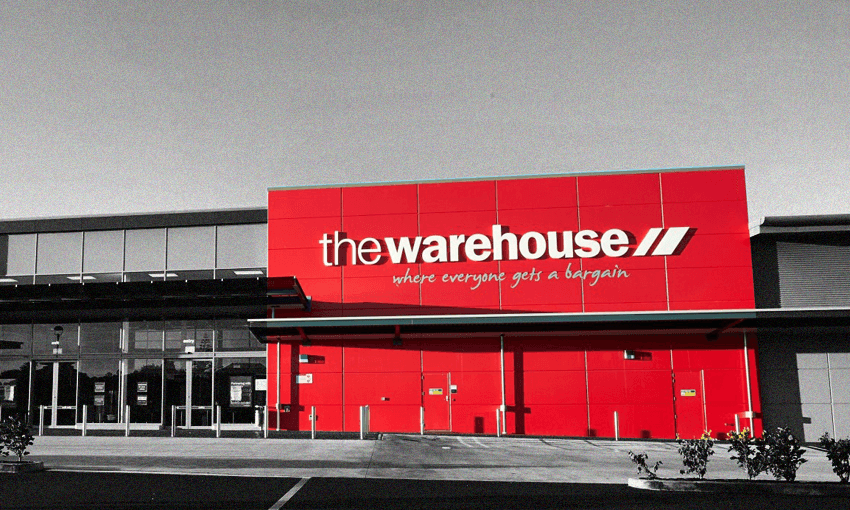BusinessDesk‘s Rebecca Stevenson looks into the controversial restructuring programme at New Zealand’s largest retailer, which has slashed hundreds of jobs and shuttered stores nationwide.
I still recall as an employee of the former Fairfax Media business seeing a report in The Australian in 2013 which filled me, a junior reporter with an interest in business, with dread.
Dr Bain – otherwise known as management consultants from Bain & Co – had been hired to find further cost savings for a business fighting a desperate rear-guard action against dwindling newspaper advertising revenue and the now dominant social networks. Its clear, the article said, that Dr Bain was about to repeat the dosage of cost-cutting it prescribed to Fairfax in 2011 and 2012. The meaning was clear: job cuts, outsourcing, and the expectation to do more with less.
For dairy giant Fonterra, its choice of physician to slash, cut and stitch was McKinsey, who pocketed a reported $100 million for its “Velocity” restructuring programme which was meant to hammer down costs after a series of disasters including its ill-fated China Farms investment.
At listed retailer The Warehouse, its restructuring programme called “Rise” has resulted in the company chopping jobs, closing stores, and the payment of a cool $22 million to a management consultancy firm.
We don’t know which doctor of management The Warehouse acquired to disassemble its business, stripping out people and costs. But we do know it planned to axe about 130 staff from its head office, close nine stores, and is now in the final throes of letting go of up to 750 staff out of its some 11,000 employees.
A silver lining
It’s worth noting the company committed in 2019 to paying the staff who made it through the consultant’s clutches a living wage. But the redundancies have heaped negativity on the business, with critics claiming it took close to $70 million in wage subsidy only to turn around and sack its staff.
The Warehouse Group CEO Nick Grayston said this allegation couldn’t be further from the facts; without the wage subsidy, it couldn’t have paid staff their full wages. Without it, who knows how many more jobs may have been lost. As it is, the company is following through with the plan put in place by the consultants.
Grayston said he was prevented from saying who they are by their contract, but said there were 292 different transformation initiatives executed over about 18 months at NZ’s largest retailer.
He said the company had “accessed pockets of value”. The payments were a success fee, and part of the value the savings and cuts generated. “Roughly 45% were cost-orientated, or cost out, and 55% were margin enhancing.”
The retailer’s expenses in the exercise were paid back in about six months, which helped it with some of the headwinds it was facing, Grayston said.
The $22 million earned by the nameless consultants was more than the company had predicted it might payout in 2019. In that year, the company said it expected to realise further benefits from the Rise programme at a cost of between $18 million to $20 million.
In 2019, Rise cost The Warehouse Group $15.7 million.
A new focus
In his CEO report from that year, Grayston outlined how the company was shifting shape and focus, attempting to become adaptable and deal with its own threats.
It’s clear, Grayston said, the company still needed to make the full pivot from being a rigid, 20th-century command-and-control organisation focused on supply to become a nimble, digital company focused on solving customer problems.
“With that goal in mind, we’re assessing different operational models, adjusting our culture and looking to adopt lean principles such as speed-as-a-habit, agility, flexibility, minimum viable product and fail-fast as part of how we operate.”
It faces increased competition from retailers such as a resurgent Kmart and the soon-coming Costco, and also an onslaught from online.
The Warehouse isn’t unusual among New Zealand retailers in that it’s been a slow mover to online sales. But Covid-19 has shocked the ailing patient into a final recognition – if you’re not online, and doing it well, you could end up dead.
Its results post the nationwide lockdowns show swift change can be forced. Online sales finished the year up 50% on 2019, and in the second half of the year were up 126%. Almost 50% of its online shoppers were new to e-commerce.
Now, The Warehouse has arisen, and Rise is over.
It has a new restructuring programme, with a less try-hard name (Agile) which is in full flow. It has a familiar prescription though – job losses and cost-cutting.
“The group has partnered with the same consultancy firm which helped with the ‘Rise’ transformation programme to assist with the ‘Agile’ transition, based on a similar fee arrangement,” its 2020 financials show.
Whether this programme will be as successful for the consultancy firm as Rise remains to be seen.
For the most recent financial year, its quest for agility saw it book restructuring costs of $22.2 million, with redundancy payments of $13.7 million. It expects to pay out a further $9.1 million in redundancy costs 2021. It’s paid $4.4 million to close stores.
A further $4 million in 2020 was paid to the faceless consultants.
It appears the consultancy business is in good health.
This article originally appeared on BusinessDesk. Its team publishes quality independent news, analysis and commentary on business, the economy and politics every day. Find out more.
